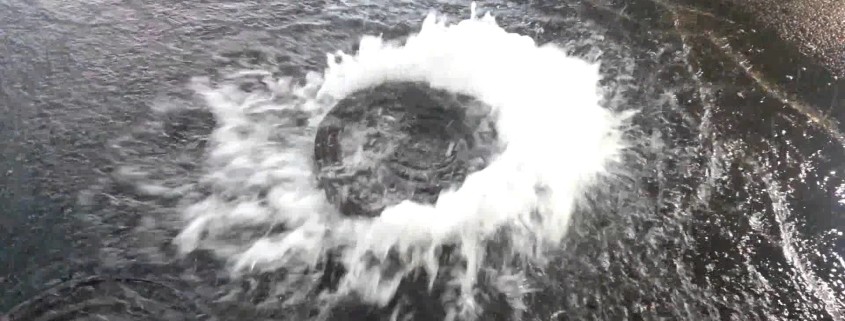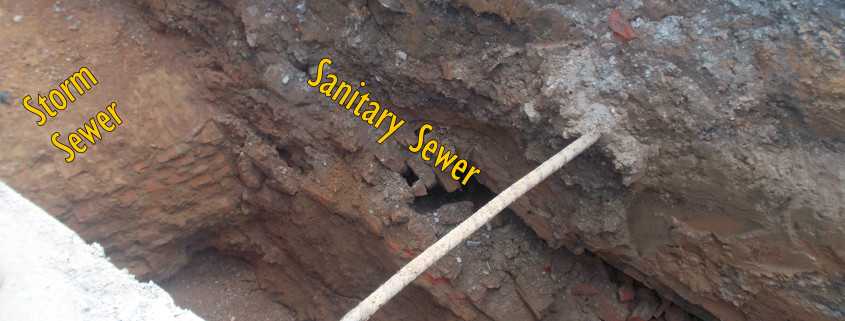Sanitary Sewer Overflow Solution Comes from An Unlikely Source: A Fish

This article on how Middletown Wastewater Treatment Plant solved its Sanitary Sewer Overflow problem was originally published in the June 2016 issue of Keystone Water Quality Manager. It is reprinted here with their permission.
No doubt a fisherman would be intrigued seeing a rock bass on the fine screen at the Middletown WWTP, but the ear tuned to hear “inflow” was even more intrigued.
The visit from the rock bass had been preceded by two decades of inflow reduction efforts due to Sanitary Sewer Overflow issue (SSOs). Yet despite increased interceptor sizes and redirected flows, the SSOs continued. A sewer system dating back to the 19th century can indeed be challenging, but sometimes solutions are inspired in the unlikeliest of ways.
Discovery of the rock bass was mentioned casually at an authority meeting, and immediately the authority’s engineer began to wonder if there was an unknown connection between the borough’s sanitary sewers and storm sewers. Rock bass are not kept as pets, of course, so the fish would not have entered the system from a toilet or home drain. It must’ve come from Swatara Creek. There is no way the fish came through the WWTP effluent pipe, and only the local storm sewers discharge to Swatara Creek, not the sanitary sewers. Therefore, the fish must’ve entered the sanitary system directly from a connection with the storm sewers. But where?
After several discussions with treatment plant operators and other staff at the borough and authority, the engineer was able to narrow the search down to three possible locations, one of which was located at the site of a streetscape project under construction at the time. Searching this area for a sanitary and storm sewer connection would be very difficult because it was the heart of the borough’s downtown business district and was surrounded by a nest of other utilities and old Brownstone businesses. Yet the effort was worth it: By carefully coordinating with the contractor, the borough was able to discover the unknown connection between the local sanitary and storm systems, and, once it was corrected, sanitary sewer overflows (and basement back-ups at local businesses) were finally eliminated!

This story illustrates the importance of harnessing the feedback and input of your operators and staff at all levels of an authority’s organization. Had the operators’ odd discovery of the rock bass (later nicknamed Leaky) never made it to the authority and their engineer, SSOs could’ve potentially continued in the borough for many years. Operators possess unique knowledge of a system’s materials, construction and history. This knowledge has real value that can lead to major cost savings like those realized by this solution to the borough’s inflow problems.
As this story shows, incorporating the input of operators and staff at all levels of an organization can make finding solutions to your most puzzling challenges as easy as shooting fish in a barrel (or fine screen).
Joshua Fox, P.E., is the eastern Regional Service Group Manager for HRG’s Water & Wastewater Service Group. He has extensive experience in the planning and implementation of I/I Programs and rehabilitation projects.
is the eastern Regional Service Group Manager for HRG’s Water & Wastewater Service Group. He has extensive experience in the planning and implementation of I/I Programs and rehabilitation projects.
 Bruce Hulshizer, P.E., is a project manager in HRG’s Water and Wastewater Service Group. He has two decades of experience in civil engineering and is an active member of the Pennsylvania Water Environment Association, where he serves as co-chair of their Collection System Committee.
Bruce Hulshizer, P.E., is a project manager in HRG’s Water and Wastewater Service Group. He has two decades of experience in civil engineering and is an active member of the Pennsylvania Water Environment Association, where he serves as co-chair of their Collection System Committee.
